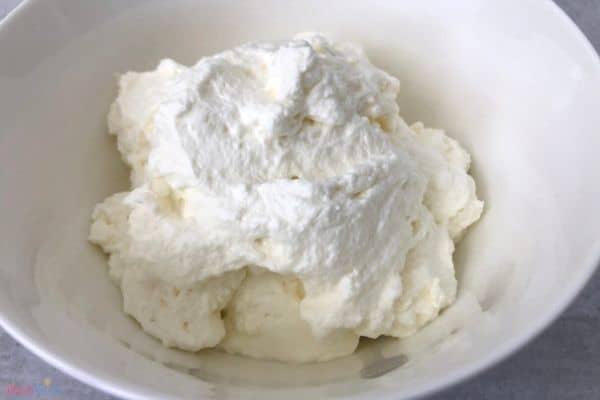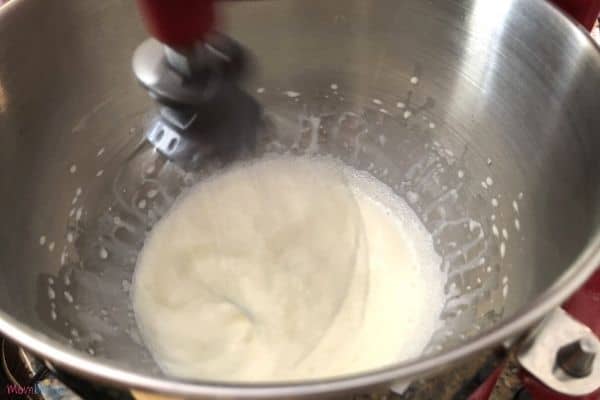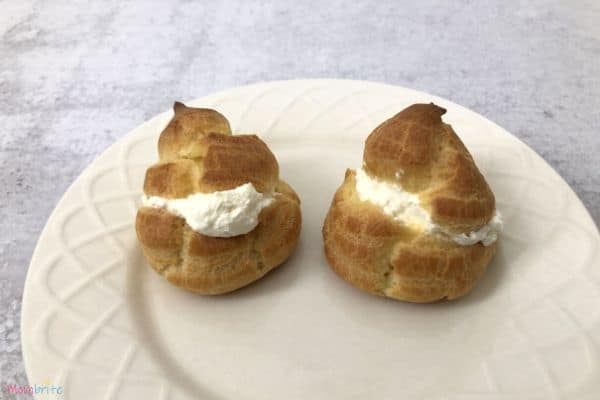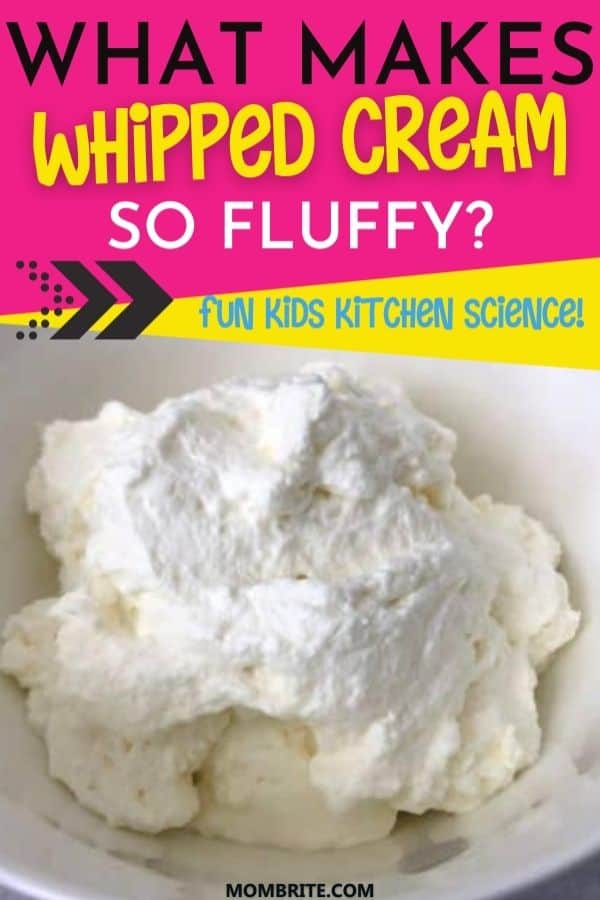When it comes to introducing kids to food science, whipped cream is the perfect place to start. Like magic, heavy cream transforms from a liquid into a solid within minutes. We have made homemade whipped cream many times, and every time the kids are amazed.

Below you will find explanations on how heavy cream magically changes into whipped cream. But before we dive into the science, let’s make some yummy whipped cream first!
How to Make Homemade Whipped Cream
Ingredients:
- Cold heavy cream or heavy whipping cream
- 2 tablespoons confectioner’s sugar
- Vanilla extract
- Stand mixer or hand-held mixer
- Mixing bowl
Instructions:
- Add the heavy cream, sugar, and vanilla extract in the mixing bowl.
- Using a hand-held mixer or stand mixer, whip the mixture on medium-high speed until medium peaks form.

If you are not eating the whipped cream right away, cover it immediately, and chill in the fridge for up to 24 hours.
Making homemade whipped cream is an easy way to get your kids involved in the kitchen. They can pretty much do everything except maybe they might add a tad more sugar than you would like.
Our favorite use of whipped cream is to use it as filling for the choux pastry. The light, airy shell plus creamy whipped cream make such a delicious and satisfying dessert.

Science Behind How Whipped Cream Whips
As we have seen in homemade butter in a jar experiment, agitating heavy cream results in whipped cream and eventually butter.
Heavy cream consists of about 30-40% of fat. When you whip a bowl of heavy cream, the agitation adds air bubbles into the liquid.
At first, the cream gets foamy. If you stop whisking at this point, the air bubbles would eventually burst and the cream would go back to its liquid form.
However, if you continue whipping, the agitation now not only keeps forming air bubbles but also starts to strip away the protective outer membranes on the fat globules. The fat molecules combine and rearrange themselves around the bubbles, trapping the air inside.
The whipped cream starts to become stiff with a smooth texture. Once you notice the cream has increased in volume and a curled peak forms when you lift up the whisk, then the whipped cream is done.
If you continue to agitate the whipped cream beyond this point, you are risking overwhipping. If the cream looks slightly yellow and has little clumps, you are now past the whipped cream stage and well on your way to make yummy homemade butter.
Conclusion
I always have a pint of heavy cream in my fridge. It can be used to make alfredo sauce for pasta, ice cream in a bag, and of course, whipped cream for dessert toppings or fillings.
No matter how many times you make whipped cream, I bet your kids will gather around you to watch the cream getting whisked until it becomes solid whipped cream. And they will probably steal a lick or two here and there. All part of the fun of learning science and helping out in the kitchen!

